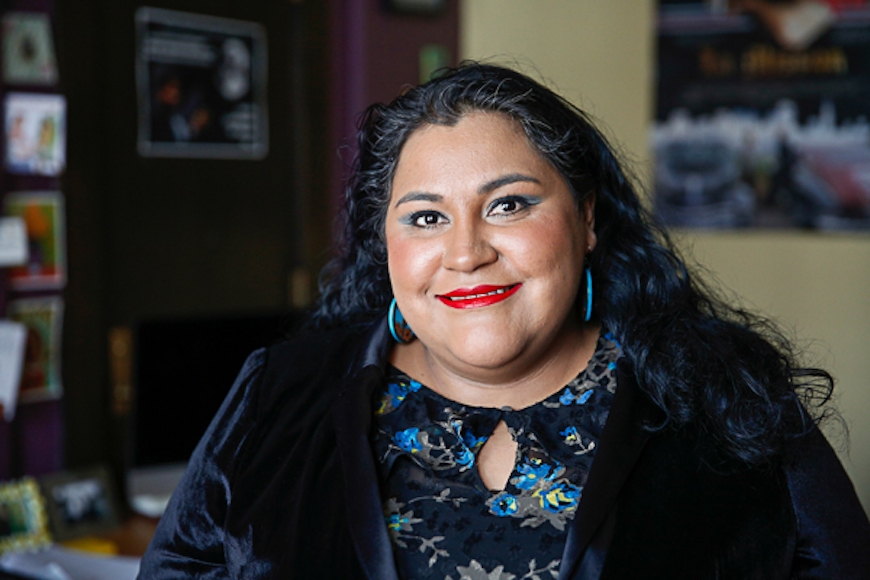Tourism: The Legacy of Conquest in Michoacán
On the Western coast of Michoacán, the Sierra Madre del Sur mountain range hugs the Pacific Ocean. The crystalline mountains reach elevations of 8,000 feet and contribute to Michoacán’s idyllic coastal atmosphere.
Michoacán is a state in the west of the Mexican Republic and is home to the beautiful and heavily toured Lake Pátzcuaro. The largest of five islands in Lake Pátczuaro is called Janitzio, a name that translates to “where it rains.” Perched on top of a hill, the town of Janitzio is inhabited by the Indigenous P’urhepecha people. The Mexican government officially labeled it as a pueblo mágico, or "magic town," a distinction designed to drive tourism.
Gabriela Spears-Rico was a graduate student when she first embarked on an ethnographic study of tourism in Janitzio, where she spent eight months living with the locals. Although Michoacán attracts both domestic and international tourists, Spears-Rico was specifically fascinated by mestizo tourism in a predominantly indigenous region like Janitzio. Mestizo people are of European, African, and indigenous descent, and it was Spears-Rico’s goal to understand how history and the legacy of European conquest inform interactions between mestizo and indigenous peoples.
The Legacy of Conquest
Spears-Rico is a cultural anthropologist and an assistant professor with a joint appointment with the Chicano & Latino studies (CLS) and American Indian studies (AIS) departments. She is a 2019 recipient of the highly competitive Woodrow Wilson Career Enhancement Fellowship, which is awarded to scholars who show potential in their fields and are committed to diversity in academia. The fellowship allows her to finish the manuscript of her book, Mestiza Melancholia and the Legacy of Conquest, which centers around her ethnographic research in Michoacán.
Spears-Rico’s study examines interactions between Mexican mestizo tourists and the Indigenous P’urhépecha people who host them during the Days of the Dead. Spears-Rico discovered that the local communities seemed to partake in a performance of their indigeneity to curate an experience for tourists—including erecting altars in the home and cemetery, hosting visitors during the Day of the Dead celebrations, and performing music and dances in their native language.
“I found the idea of Mexicans touring other Mexicans during the Days of the Dead very interesting,” says Spears-Rico. “The Days of the Dead is supposed to be an intimate communion with our own dead, so the fact that one would tour graveyards is fascinating.”
Philip Deloria is a historian who specializes in Native American, Western American, and environmental history. He coined the phrase “playing Indian,” which describes the performance of an American Indian identity by non-Indians. Spears-Rico hypothesizes that mestizo tourists are engaging in acts of appropriation in indigenous communities like Janitzio.
In her study, Spears-Rico asked tourists what they enjoyed most about their visit to Michoacán. Commonly, tourists told her that they enjoyed hearing the original language and engaging in the native traditions like Days of the Dead. Tourists say that they were given a glimpse into the past, which is problematic. Oftentimes the broader public speaks of Natives and traditions in the past tense—making it seem like Natives are not present and somehow “primitive.” Spears-Rico wanted to observe how this language and perception contributes to mestizo tourism.
Family, Community, Education
Spears-Rico also explored the touristic relationships in Michoacán through an indigenous lens, asking questions such as "What is the P’urhepecha response to being toured?" and "How do indigenous people negotiate touristic interactions?"
Spears-Rico found that the indigenous communities are aware of tourists’ expectations for their visits; the cultural conscience relegates Indians to the past, so tourists expect adherence to traditional values and practices.
“At the same time, [the P’urhepecha] are very aware that whatever they put on for tourists is going to be taken as a truth attached to the cultural group,” says Spears-Rico. For example, she observed that the locals would maintain altars in both cemeteries and in homes, ostensibly for the benefit of tourists, since altars are not typically set up in the home unless a family member has passed away within that calendar year.
Most locals stated that they spend the money earned through tourism on their family and to ensure their children can attend post-secondary school and college. “For them,” says Spears-Rico, “mobility seems to be important not necessarily because they’re going to forget about the community; it’s having agency about what they can gain from this relationship with mestizaje. It’s about their family, their community, and educating their children.”
Interdisciplinary Scholarship
In addition to her research and teaching, Spears-Rico is also a creative writer. Her poetry was recently featured in the Chicana Motherwork Anthology. The collection features work about the intersections between mothering and other engagements, from academia to being a health care practitioner. Spears-Rico’s contribution was on indigeneity and pedagogy through a feminist lens.
“Being in CLS allows me to weave my intellectual and theoretical labor with my creative writing,” says Spears-Rico. “It’s awesome that I can be in a department that is truly rooted in interdisciplinary modes of thinking and writing dating back to its founding during the civil rights movement. Additionally, my joint appointment in AIS supports privileging indigenous approaches to research. We don’t have a breadth of social science work published by indigenous scholars in Mexico. In Latin America, we are usually being written about rather than doing the writing ourselves. Having a home in American Indian Studies positions me to contribute to changing how indigenous people are being researched and written about in Mexico.”
As an interdisciplinary scholar, Spears-Rico has the freedom to explore her myriad academic and creative interests. She is related to the Matlatzinca community from Charo, Michoacán on her father’s side and a mestizo ejido on her mother’s side. This background has guided her research and sparks inspiration for her poetry and creative writing.
This story was written by an undergraduate student in CLAgency. Meet the team.


